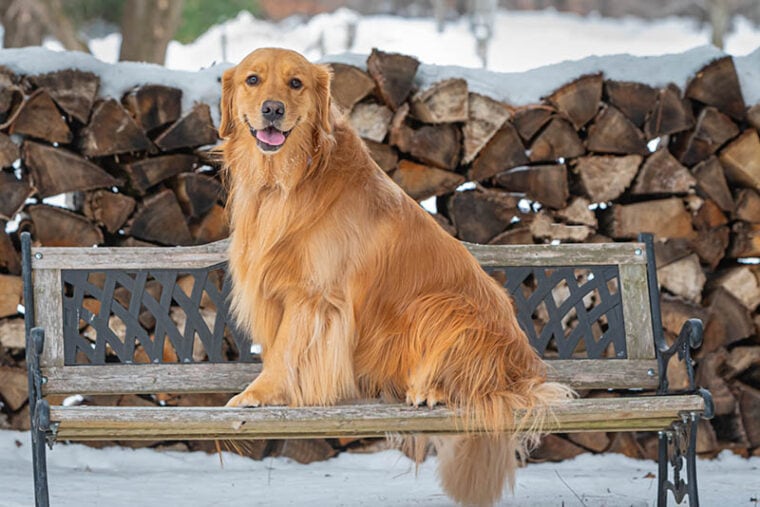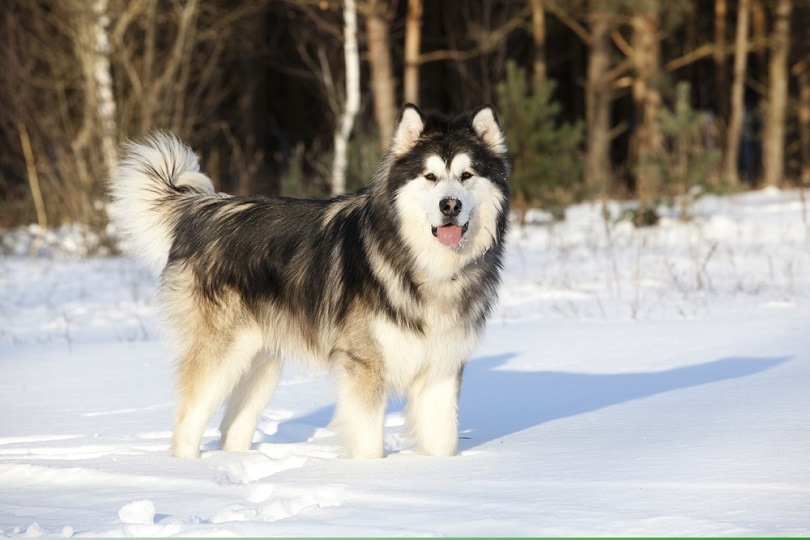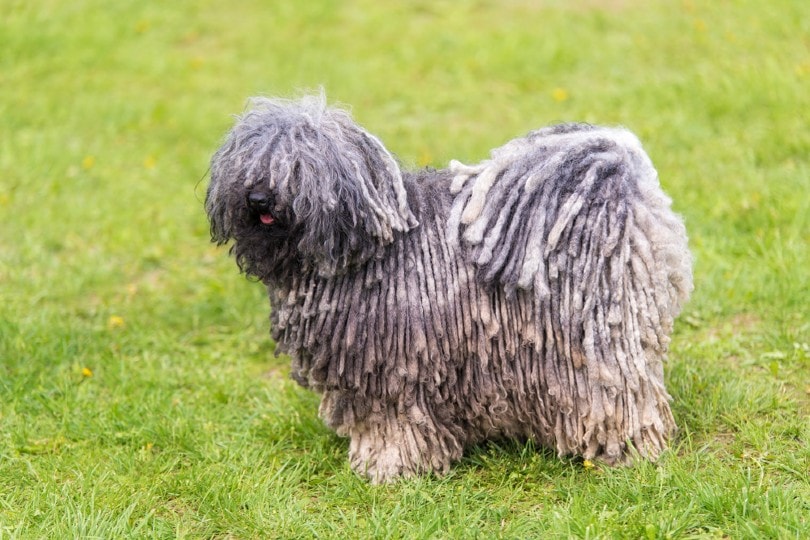- March 28, 2024
Do Dogs Have Hair or Fur? 6 Interesting Differences


“Hair” and “fur” are often used interchangeably when referring to a dog’s coat, but are they the same thing? Both words are practical terms used when referring to genetic programs for differing dog coat types. On a cellular level, hair and fur are the same as they’re both made of keratin.
Practically, however, there are some major differences. Read on to learn more.

Hair vs Fur: The 6 Main Differences
The best way to figure out if your dog has hair or fur is to look at the differences.
1. Length
One of the biggest differences between dog hair and dog fur is the length. Some breeds have coats genetically programmed to grow to a specific length, also known as a predetermined length (PDL). PDL coats will grow to a certain length and then stop. Dogs with this coat type have fur and include breeds like Jack Russel Terriers and Rottweilers.
Some coats will grow to undetermined lengths (UDL) and will continue growing until they’re cut or damaged. Dogs with UDL coats have hair and include breeds like Afghan Hounds and Irish Terriers.
Some experts believe that there are dog breeds that have both PDL and UDL traits. These include breeds like Alaskan Malamutes and Cavalier King Charles Spaniels.

2. Coat Texture
The term “hair” describes dogs with longer and finer coats. Dogs with hair often have texture to their coats. They can be curly or wavy, though the hair can also be straight. It feels smoother and finer to the touch. Hair goes through longer growth cycles, which can result in less frequent shedding.
“Fur”, on the other hand, describes breeds with shorter and denser coats. They have shorter growth cycles and may be moderately heavy shedders. Many pups with fur have double coats, meaning they have a coarse overcoat and a softer, finer undercoat that helps with thermoregulation.
3. Grooming
Dogs with hair shed less and produce much less dander than their furred counterparts. Hair coats trap particles and dead follicles more easily than fur coats. While this means you will likely deal with less shedding around the home, there is a catch-22. All this trapped debris can cause tangles and mats very easily. These tangles can hold moisture close to your pup’s skin, which can lead to infections or infestations. This is part of the reason why regular grooming and hair trims are so important for dogs with hair coats.
Fur dogs are notorious for shedding and producing dander because their coat texture doesn’t hold debris as easily as their haired counterparts. The catch here is that you’ll spend much more time vacuuming and money on lint rollers to keep your home and clothing clean.
Additionally, changes in temperature and humidity will make a huge difference in a furred dog’s shedding pattern. This is mother nature’s way of helping your pup thermoregulate to stay cool in the summer and warm in the winter. Dogs with fur-type coats shouldn’t be shaved but do often benefit from deshedding treatments.

4. Allergies
No dog is truly hypoallergenic, but some breeds may trigger less allergies as there is less hair floating around the house, spreading skin cells (dander) . It’s important to know that people are allergic to the proteins in an animal’s skin cells, saliva, or urine, not their hair or fur.
Dog breeds with hair may not be more hypoallergenic than their furred counterparts, but they may be easier for allergy sufferers to live with. This is because hair tends to be coarser and will hold onto allergens better than fur. For example, Poodles are often regarded as one of the best hypoallergenic dog breeds because their tight, curly hair captures allergens much better than fur.
5. Care
Dogs with fur coats not only have more hair follicles than their haired counterparts, but each follicle contains more hair, too. Dogs with short fur shed and regrow more often than those with longer hair, requiring more nourishment from specialty conditioners that contain specific minerals to promote coat growth.
Dogs with long hair may hold onto the same hair for months or years, increasing the need for moisturizing hair care. You need to provide your pup’s coat with protection to promote healthy hydration to ensure it doesn’t dry out and break.

6. Breeds
If all the above information didn’t help you determine your pup’s coat type, maybe the lists below will.
Dog Breeds With Hair
- Basenji
- Chinese Crested
- Havanese
- Maltese
- Poodle
- Portuguese Water Dog
- Puli
- Yorkshire Terrier
Dog Breeds With Fur
- Akita
- Boston Terrier
- Collie
- French Bulldog
- Golden Retriever
- Great Dane
- Great Pyrenees
- Labrador Retriever

Final Thoughts
While “fur” and “hair” may be used interchangeably, they are two separate terms used to describe a dog’s coat. Though fur and hair are chemically identical, the approach to caring for each coat type will differ as the texture can vary wildly. Dog owners should know what kind of coat their pup has so they know how to take care of it to keep it healthy.
Featured Image Credit: Debra Anderson, Shutterstock
Tags
What do you think?
Related Articles

New Puppy Checklist: Gear You’ll Need for Your New Dog
Getting a new puppy is really exciting, but before you welcome them home, it’s important to prepare your space for them. Since puppies need a

How Big Do Mini Poodles Get? Vet Reviewed Average Weight & Growth Chart – Dogster
The information is current and up-to-date in accordance with the latest veterinarian research. Learn more » When you buy a Miniature Poodle, you might not

Can Police Dogs Smell Nicotine? Vet Verified Facts & Info – Dogster
The information is current and up-to-date in accordance with the latest veterinarian research. Learn more » While cigarette sales have been declining steadily for decades,

How Old Is 5 in Dog Years? Vet-Approved Guide to Each Size of Dog – Dogster
The information is current and up-to-date in accordance with the latest veterinarian research. Learn more » A common method for calculating a dog’s age is

